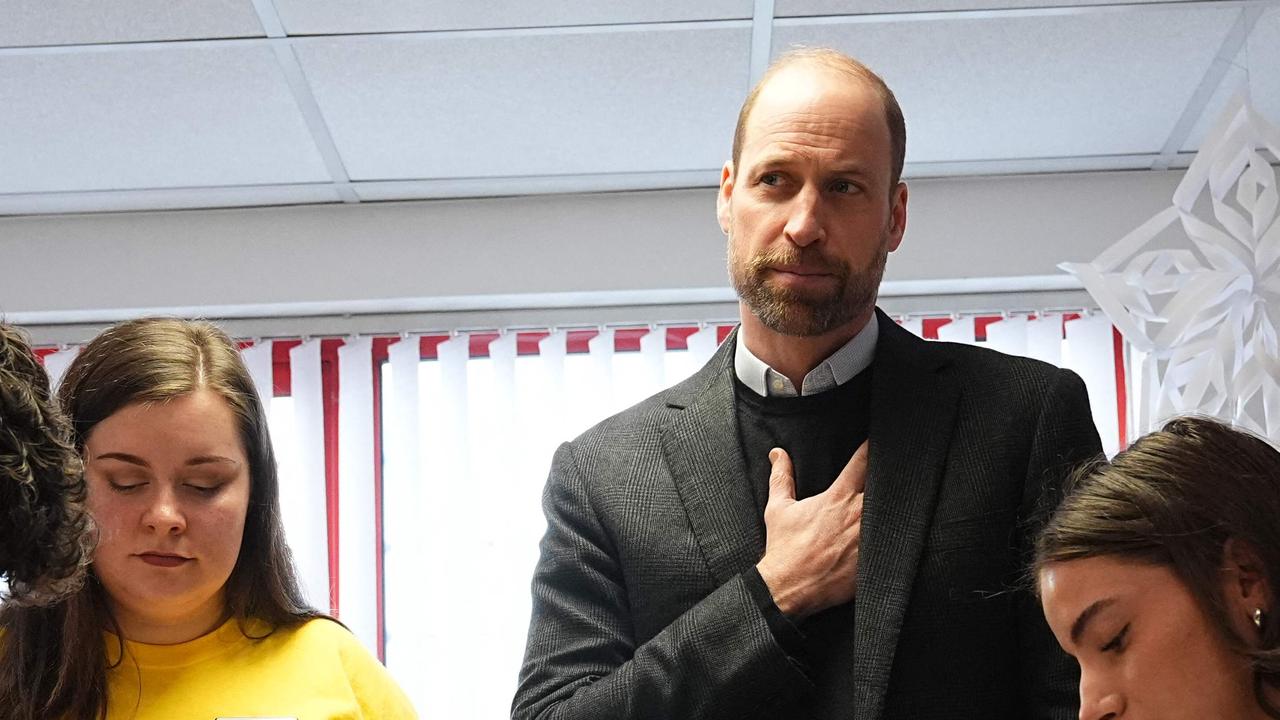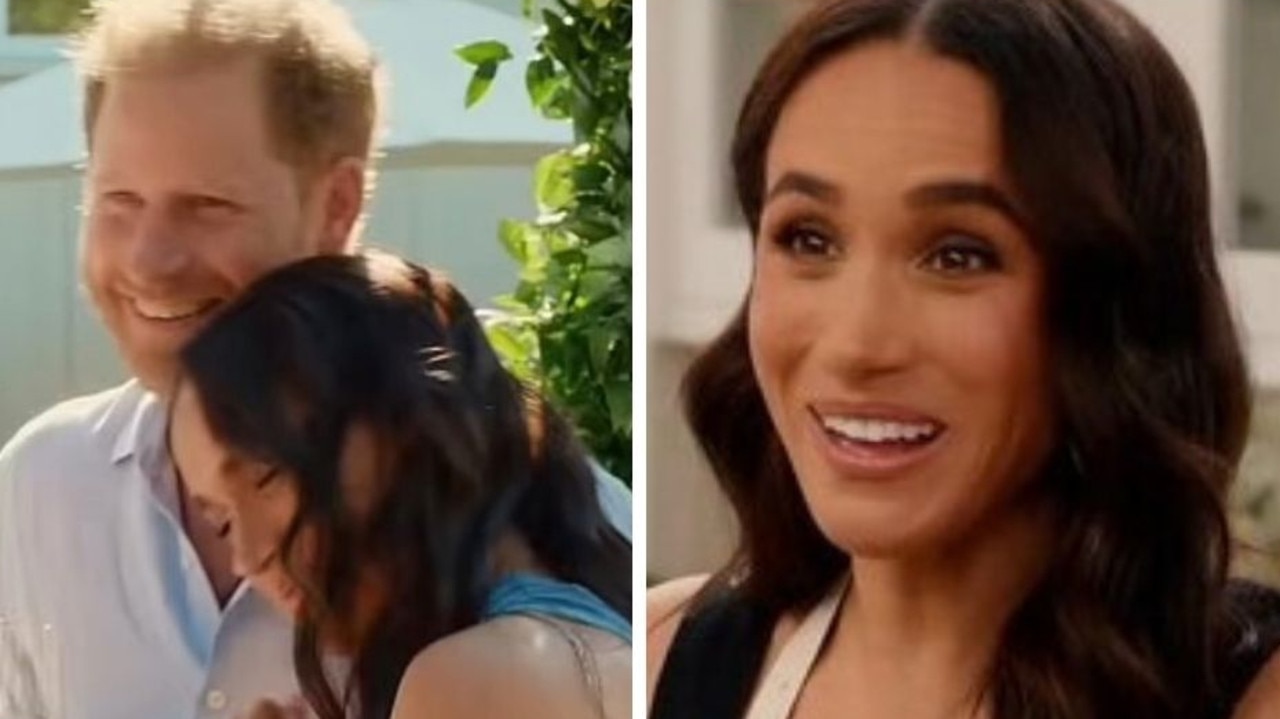Body language expert reveals what William and Catherine reveal
A body language expert has revealed what the Prince and Princes of Wales were likely experiencing as the world watched their every move.
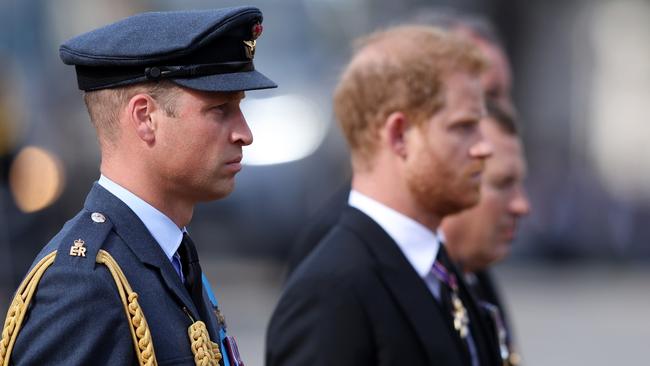
Royals
Don't miss out on the headlines from Royals. Followed categories will be added to My News.
While Prince Harry and Meghan Markle rely heavily on physical contact and connectedness, Prince William and Kate are also suffering immense grief, according to a body language expert.
It is evident that Prince William and Prince Kate are feeling highly distressed in this photo,” Ms Connection Specialist and Body Language Expert Katia Loisel.
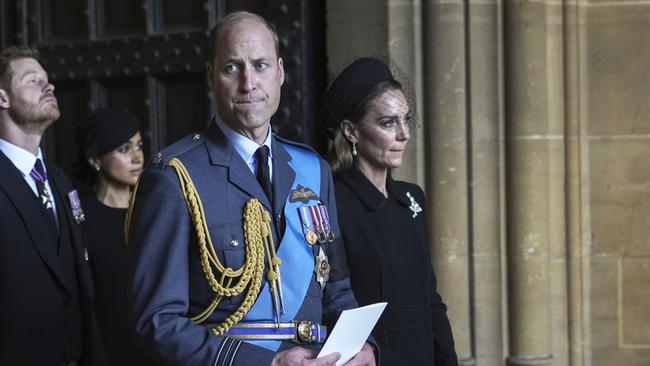
“
“Their slightly lowered heads, use of protective arm barriers, furrowed brows, tension in the neck and mouth and tightly compressed lips indicating a couple who are trying to hold it all in. Controlled by our limbic system compressed lips are reliable indicators of negative emotion.
“The more pronounced the lip compression, as is the case with Prince William, his lips pressed together, rolling inwards until they have completely disappeared indicate extreme levels of discomfort and stress.”
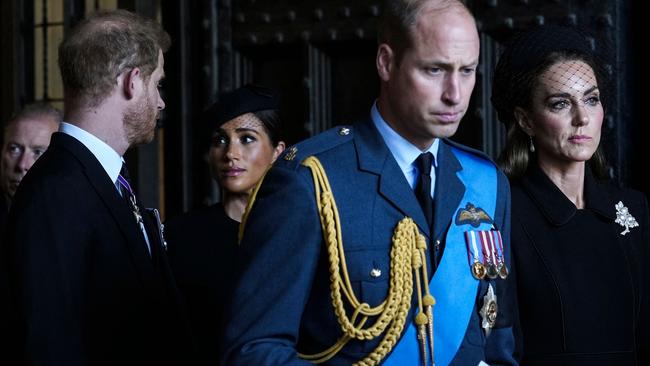
“This photo is interesting from a nonverbal perspective highlighting the differences between the two couples,” she said.
“Prince Harry and Meghan use both contact tie signs, such as holding hands and non-contact tie signs, such as postural echoing, their bodies orientated inwards towards one another, and mutual gaze in a mutual display of support and reassurance.
“In contrast, clearly grief stricken and lost in their own thoughts, Prince William and Princess Kate keep a formal distance, in keeping with the the formality and seriousness of the event, and Prince William’s position as heir to the throne.”
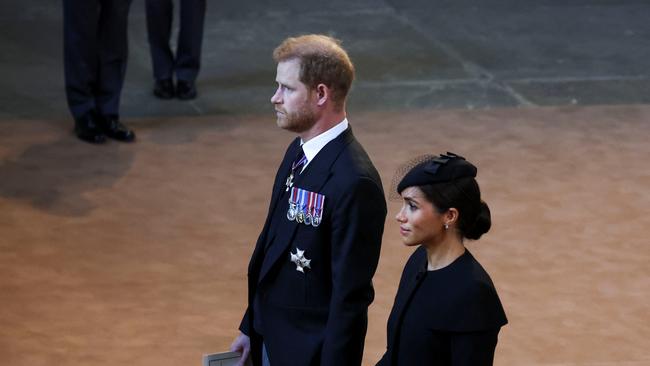
Whilst Prince Harry and Meghan held a more formal distance throughout much of the procession, Ms Loisel observed the couple quickly reconnecting, arms extended, “non-verbally seeking each other out, reflecting a desire to connect and be close to one another”.
“An affectionate and tactile couple, their hands were clasped, palms connected with fingers intertwined in an intimate gesture that provides both support and reassurance.
“However, watching the video footage Meghan and Prince Harry’s hand hold may to serve another function. Holding hands is correlated with a reduction in stress levels and that seems evident here.
“Prince Harry whose heightened blink rate, lowered head, shifting of his weight, swaying, use of pacifying gestures, lip licking and swallowing was indicative of someone in distress appeared visibly more relaxed after reconnecting physically with Meghan.”
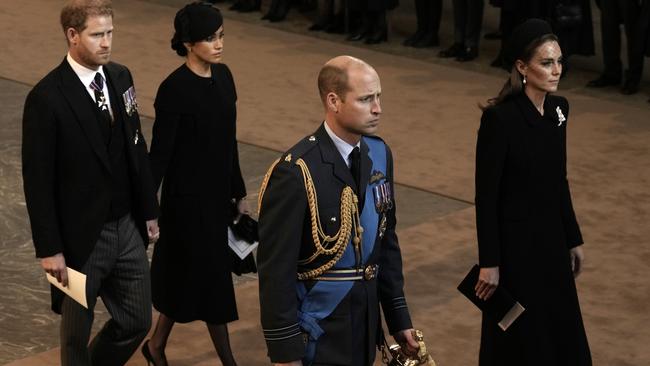
“Emotions are complex and can come in waves as is seen in this photo,” Ms Loisel said. “Whilst holding their composure, adopting poker faces in line with the seriousness of the event and perhaps in an attempt to mask their pain for much of the procession, we see a marked nonverbal change as Prince William and Prince Kate as they prepare to leave the Westminster.
“Video footage taken from a different angle at the moment this photo was taken shows a distraught Princess Kate and Prince William. Whilst normally less emotionally expressive than Prince Harry and Meghan, it was clear that Princes William and Princess Kate were struggling to hold it together.
“On the verge of tears Kate appears distraught, walking eyes forward and slightly downcast, face lacking in muscle tone, her lips slightly compressed, blinking rapidly and swallowing suggesting an attempt to hold off tears.
“Likewise Prince William’s facial expression is one of sadness, the inner corners of his eyebrows pulled up and together, upper lids droopy, lips compressed and mouth corners of the mouth slightly lowered.”
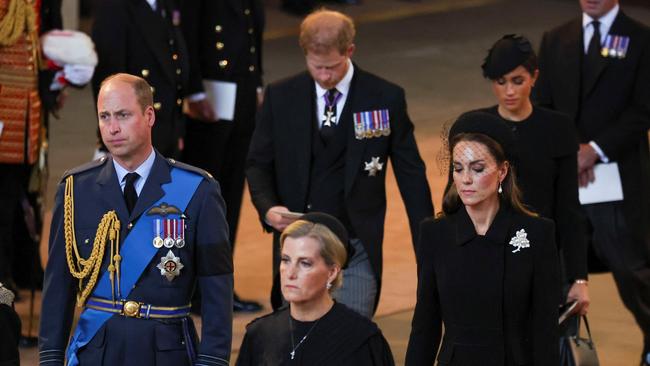
Whilst Prince William and Meghan hold hands in their signature hand clasp, providing a sense of “closeness and reassurance”, Prince William and Princess Kate keep a more formal distance, “reflective of their roles and the seriousness of the occasion”.
“Prince Harry leads the way, his hand over hers, Meghan falling ever slightly behind, allowing him to lead the way,” Ms Loisel said.
“Meghan appears to have regained her composure after the reunion last week, in which she appeared ill at ease, adopting a more confident pose and a subtle expression of sadness and empathy.”
HARRY COPING WITH ‘TWO LOSSES’
Prince William and Prince Harry have walked side-by-side behind the Queen’s coffin as they reunited in grief during a historic royal procession through London.
Prince Harry, who stepped away from the royal family in 2020 amid much acrimony, stood with his brother to his right and his cousin, Princess Anne’s son, Peter Phillips, to his left.
At Prince Philip’s funeral last year – the estranged brothers were kept apart by Mr Phillips.
Prince William and Prince Harry marched in the second of three rows in the 10-strong procession which left Buckingham Palace at 2.22pm local time (11.22pm AEST).
Body language expert Judi James said the Duke was dealt a double blow as he grieves his grandmother as well as his former life.
She said Prince Harry is “overwhelmed” by grief after losing the Queen, after photos emerged of him staring at his Order of Service and putting his hand up to his eyes as he was “wincing in pain”.
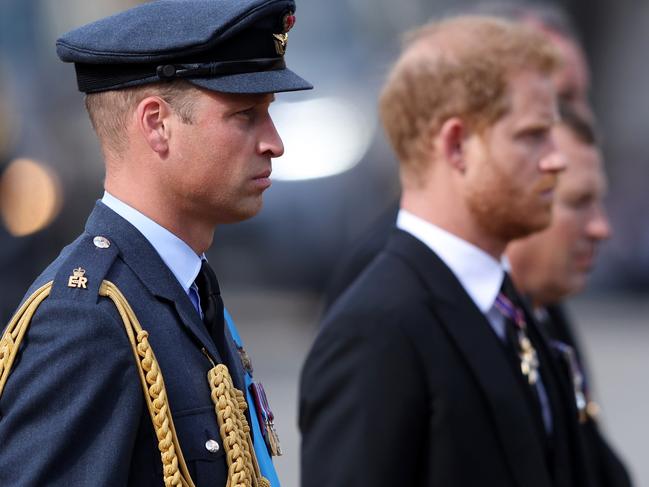
“The grief and perhaps the pressure of the occasion seemed to overwhelm Harry here,” she said.
“He was not only mourning his beloved grandmother, but perhaps also experiencing the sense of family and history that he has left behind to create his own family and life in the US.”
The behaviour expert suggested he was “trying in vain to mask his emotions” by staring at his order of service during the short ceremony led by the Archbishop of Canterbury.
“When that seems to not be enough, he places his entire hand over his eyes in a gesture that suggests he is desperate to mask and conceal his emotions.
“When his face is visible he seems to be wincing in pain, which is an expression signalling deep levels of sadness that can often feel like physical pain.”
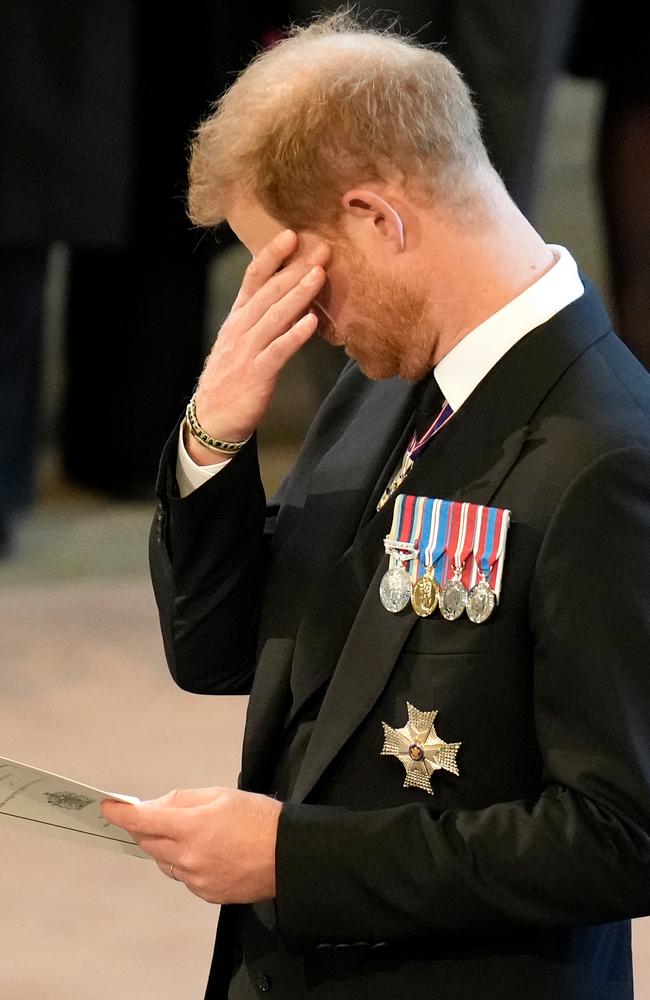
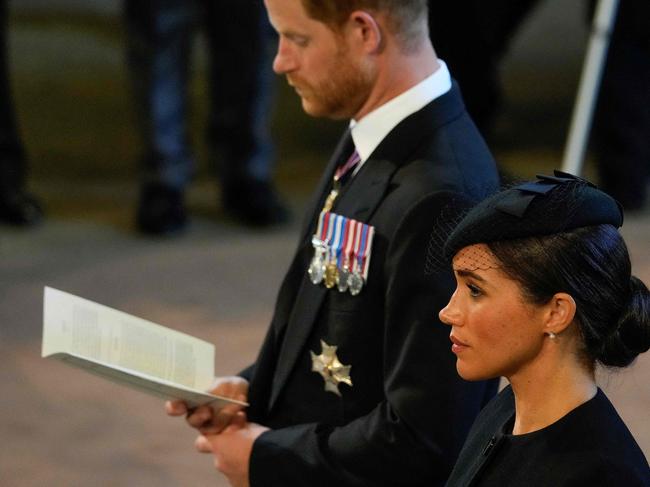
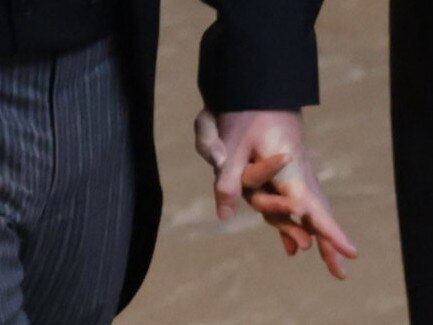
Ms James suggested Prince Harry had a “haunted expression” while displaying telling signs he was dreading seeing the Queen’s coffin.
She said banning him from wearing his military uniform impacted his ability to conceal his emotions.
She added: “As he watch the coffin being lowered at the end of the walk, one hand stroked his frock coat in a self-comfort ritual.
“His shoulders rolled gently, as though miming the act of loading and carrying the coffin, suggesting he would have liked to be the one helping to carry it.”
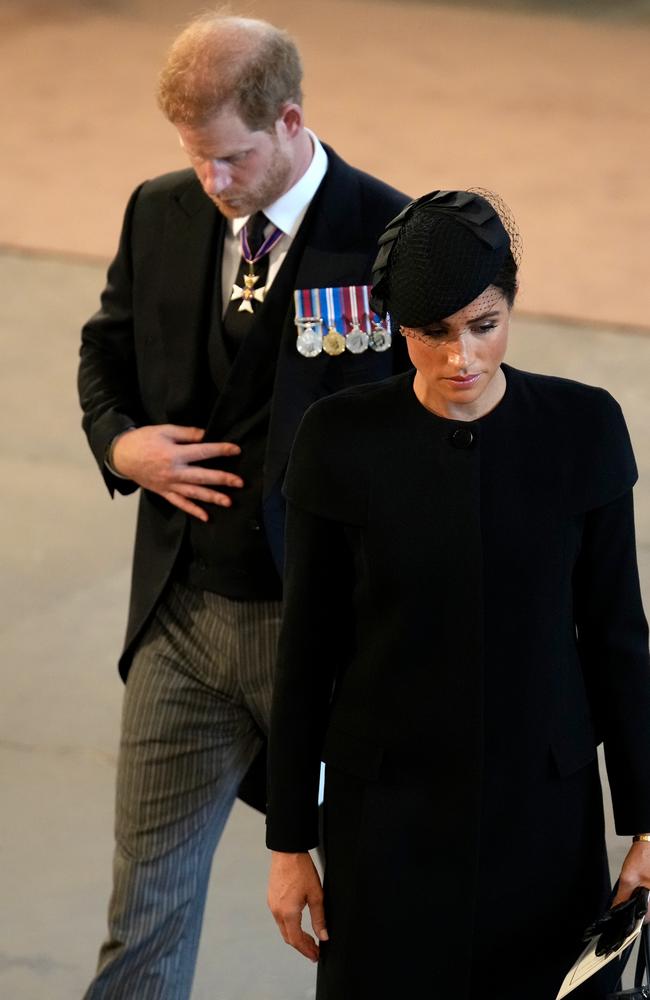
At the procession, the Imperial State Crown glistened on a cushion atop the Royal Standard which draped over the Queen’s coffin.
King Charles led the royals – flanked by Princess Anne, Prince Andrew and Prince Edward.
At the back was Princess Anne’s husband Sir Timothy Lawrence, to his right was Prince Richard, Duke of Gloucester, the grandson of George V.
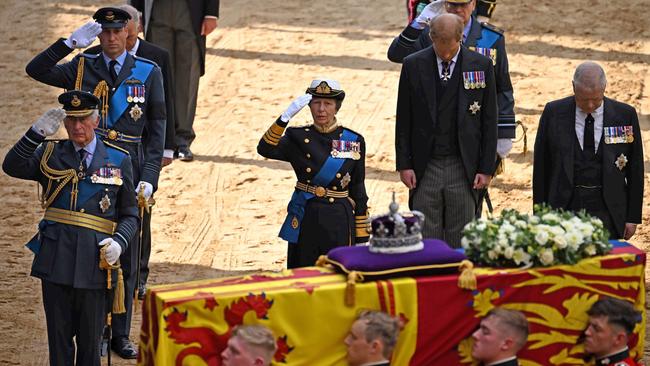
And the Earl of Snowdon – son of Princess Margaret, The Queen’s sister – to The Duke’s right.
Camilla, The Queen Consort, Kate, The Princess of Wales, Meghan, The Duchess of Sussex and Sophie, Countess of Wessex, did not march in the procession. They instead travelled in cars behind those marching.
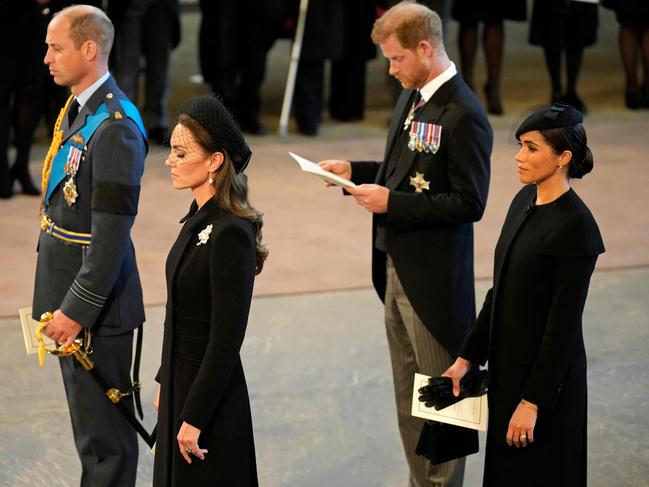
They then exited their vehicles to walk into Westminster Hall with the rest of the procession.
Also forming part of the procession were loyal members of the late Queen’s staff, including two of the Queen’s Pages and the Palace Steward, who walked directly in front of the coffin.
Other devoted members of the late Queen’s Household, who aided the monarch as she carried out her duties and in her daily life.
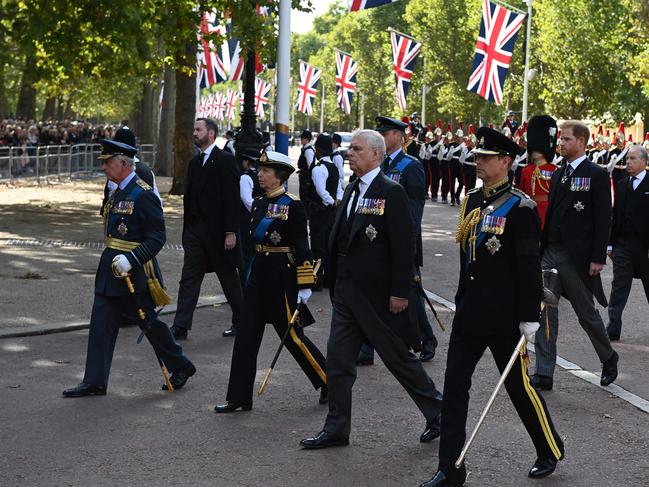
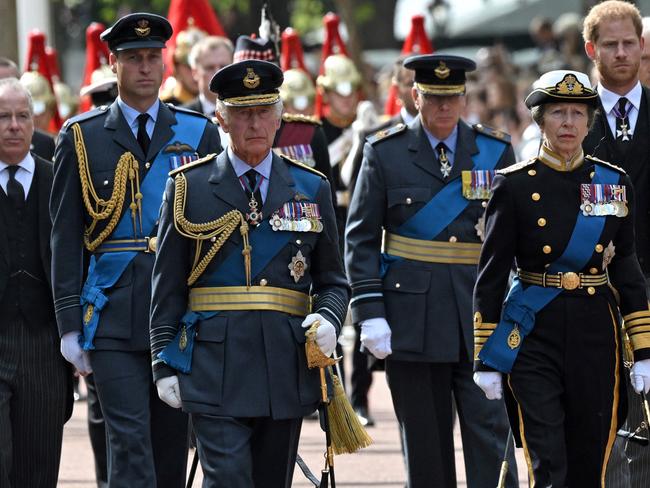
They included her longstanding top aide, private secretary Sir Edward Young, and the Keeper of the Privy Purse Sir Michael Stevens, who is in charge of the monarchy’s finances.
Her Majesty’s coffin travelled by gun carriage, towed by The King’s Guard.
The procession travelled from Buckingham Palace and then up The Mall, before moving down Horse Guards Road and past Horse Guards Parade.
It then wove its way down Whitehall, on to Parliament Square and ended at the Palace of Westminster and Westminster Hall at around 3pm local time (12am AEST).
Once the Queen’s coffin arrived, the Pall Bearers then carried her into Westminster Hall.
They were 10 former and serving armed forces equerries to Elizabeth II, who were at her side in uniform throughout her reign, supporting her at engagements and organising her public diary.
A short service was then led by the Archbishop of Canterbury after the coffin’s arrival in Westminster Hall.
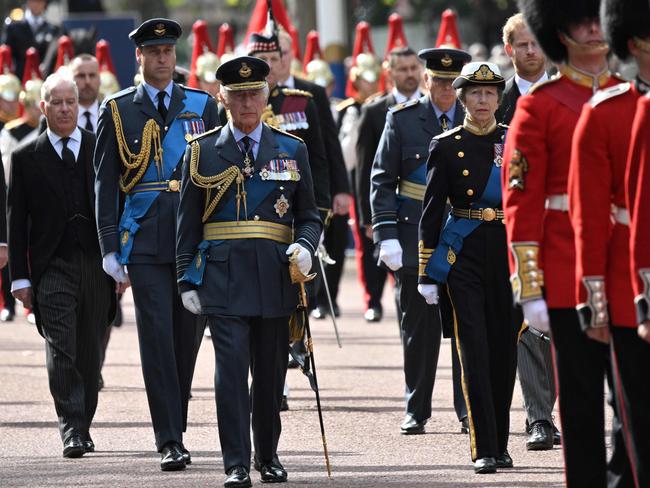
The Queen will now lie in state until her state funeral on Monday.
Members of the public have started to file past the Queen’s coffin, with queues already stretching for kilometres.
Millions are expected to file past the Queen’s coffin in the coming days.
British reports estimated queue times skyrocketed as an estimated 750,000 people flood into London to pay respect to the Queen.
The Queen left Scotland for the final time on Tuesday local time and arrived into London later that night.
Princess Anne accompanied her mother on the emotional journey back to RAF Northolt and then onto Buckingham Palace.
“It has been an honour and a privilege to accompany her on her final journeys,” Princess Anne said.
“Witnessing the love and respect shown by so many on these journeys has been both humbling and uplifting.”
Originally published as Body language expert reveals what William and Catherine reveal



